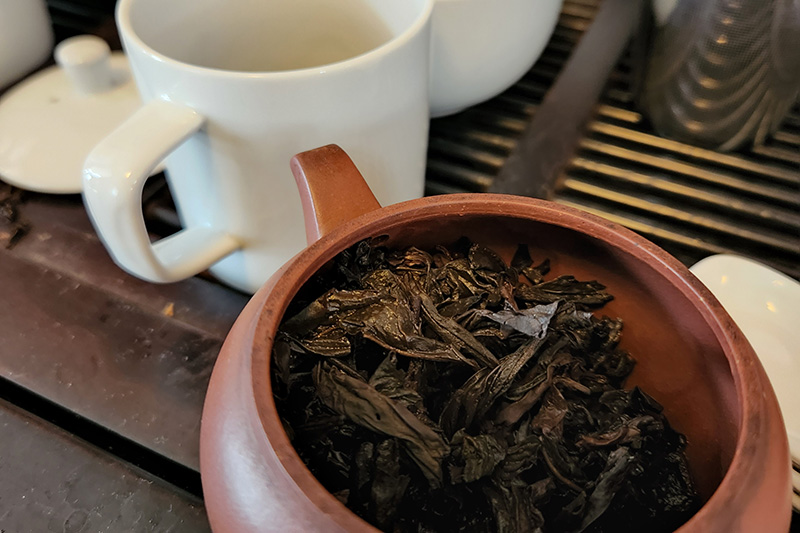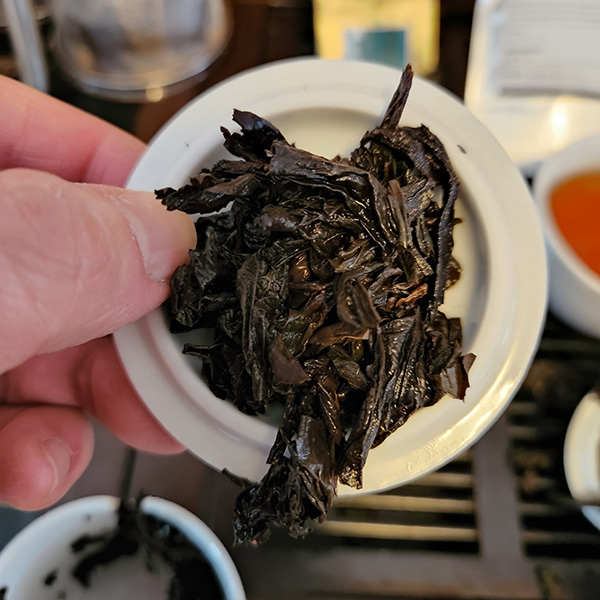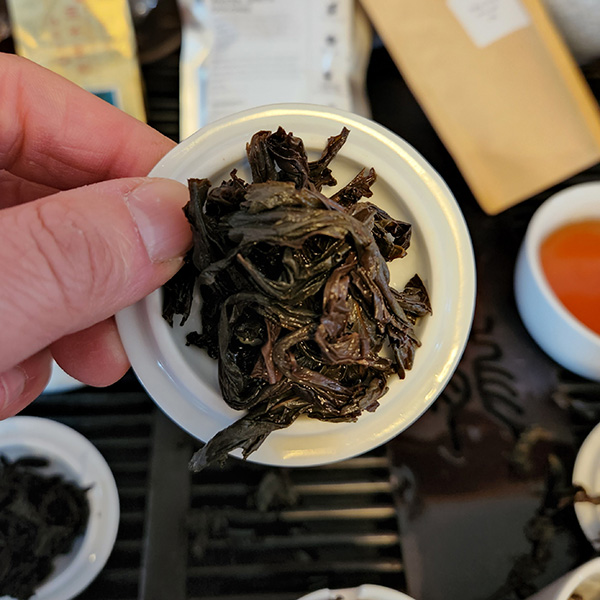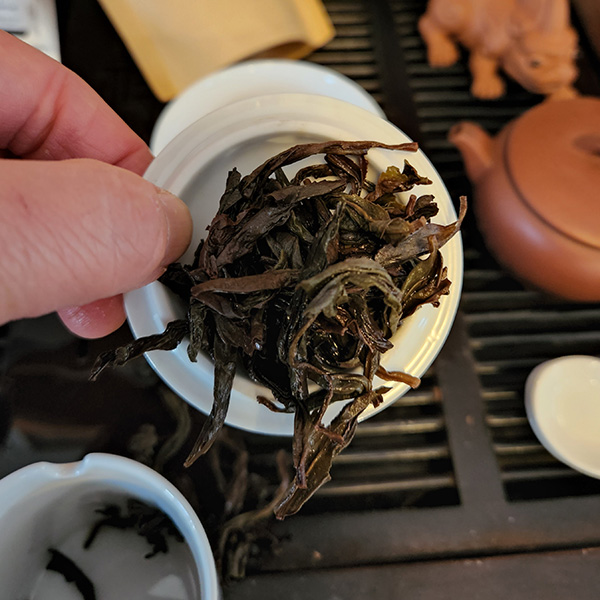Shui xian (water sprite or water narcissus) is probably my least favourite rock oolong but I had a nice session with the MyTeaPal club last night (er, 1am Sydney time) so I thought I’d revisit it.
While my ‘appreciation’ parameters were 6g in my 150ml clay teapot (at 100C for 15 seconds then +5 seconds per additional infusion), the cupping parameters I used were 3g/150ml at 100C for 5 minutes, which is closer to western standards than Chinese standards.
These are all from the spring 2021 harvest.
Cup 1: Wuyi Star Laocong Shuixian (older trees)
A thick soup with a deep woodiness on the palate that transforms into a resinous minerality. Dries the top of the tongue and salivation is activated through the cheeks.
Cup 2: Tea Runners Water Sprite oolong
A thin soup with a high note that’s reminiscent of immature bark, hits quite ‘high’ in the mouth. Returning sweetness from the middle of the tongue.
Cup 3: Wuyi Origin Shui Xian
A thin soup that is sweet from the first sip with a lingering but not unpleasant astringency. This resolves into salivation from the cheeks.
Overall I was surprised there was not more minerality in the liquor, a lot of the ‘rock’ notes came from the aftertaste. What was interesting was being able to distinguish the laocong with is much deeper flavour straight off.
One thing that comparative cupping doesn’t capture is cha qi, an elusive quality that people describe as the energy of a tea and that I would say has a lot to do with how the tea interacts with your physiology. Because you’re drinking two or more teas in a comparative cupping session, it’s hard to know which tea – if any – is giving you cha qi. I guess that isn’t part of the regular judging criteria that cupping aims to reveal.
For me, I’d much rather commune with each tea by drinking it appreciation style, but it was an interesting exercise to compare these by cupping. Have I changed my mind about shui xian? Not really! It’s still not my favourite yancha. But I’ve come to realise it’s more complex than I thought.



